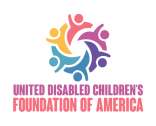Our
INITIATIVES

DISABILITY AWARENESS
Overview: Autism Spectrum Disorder (ASD) is a developmental disorder that affects communication and behavior. Symptoms can range from mild to severe and may include difficulties with social interactions, repetitive behaviors, and challenges in speech and nonverbal communication.
Initiatives: Providing specialized education programs, social skills training, behavioral therapy, and support for families to create an inclusive environment for children with autism.
Overview: Deaf-blindness is a combination of vision and hearing impairments that significantly affect communication, education, and daily living. It requires unique educational and support services.
Initiatives: Offering communication training, assistive technology, personalized educational plans, and sensory development programs
Overview: Deafness is a severe hearing impairment that hinders the processing of linguistic information through hearing, with or without amplification.
Initiatives: Implementing sign language education, cochlear implant support, auditory training, and inclusion programs in mainstream education.
Overview: Developmental Delay refers to a condition where a child does not reach developmental milestones in one or more areas such as motor skills, speech, or cognitive abilities within the typical age range.
Initiatives: Early intervention programs, developmental screenings, specialized educational plans, and family support services.
Overview: Emotional Disturbance is a condition that impacts a child’s ability to learn, build or maintain interpersonal relationships, and handle normal emotional responses
Initiatives: Providing counseling services, behavioral intervention plans, mental health support, and training for educators to handle emotional and behavioral challenges.
Overview: Hearing Impairment refers to a partial or total inability to hear, which can impact educational performance and communication.
Initiatives: Audiological services, hearing aids, speech therapy, and inclusive education practices.
Overview: Intellectual Disability involves limitations in intellectual functioning and adaptive behavior, affecting conceptual, social, and practical skills.
Initiatives: Life skills training, individualized education plans, vocational training, and community integration programs
Overview: Multiple Disabilities refer to the co-occurrence of impairments (such as intellectual disability combined with blindness) that create severe educational needs not addressed by programs solely for one impairment.
Initiatives: Comprehensive, multidisciplinary educational programs, assistive technologies, and personalized care plans
Overview: Orthopedic Impairment involves physical disabilities that affect a child’s educational performance, including congenital anomalies, diseases, or other causes.
Initiatives: Physical therapy, adaptive physical education, accessibility improvements, and assistive devices.
Overview: Other Health Impairment includes chronic or acute health problems that adversely affect educational performance, such as asthma, diabetes, epilepsy, or ADHD.
Initiatives: Health management programs, medical support in schools, individualized health plans, and awareness campaigns.
Overview: Specific Learning Disability is a disorder in one or more basic psychological processes involved in understanding or using language, impacting abilities such as listening, thinking, speaking, reading, writing, or mathematical calculations.
Initiatives: Specialized teaching strategies, individualized education plans, and assistive technology for learning.
Overview: All Impairment, including blindness, is an impairment in vision that, even with correction, adversely affects a child’s educational performance.
Initiatives: Braille instruction, orientation and mobility training, assistive technology, and inclusive classroom settings.
Overview: Traumatic Brain Injury is an acquired injury to the brain caused by an external physical force, resulting in total or partial functional disability or psychosocial impairment.
Initiatives: Rehabilitation services, cognitive therapy, physical therapy, and specialized educational programs.
Overview: Visutervention, and assistive technology for reading and writing.
Overview: ADHD is a neurological disorder characterized by patterns of inattention, hyperactivity, and impulsivity that interfere with functioning or development.
Initiatives: Behavioral therapy, individualized education plans, and classroom accommodations.
Overview: Dyslexia is a specific learning disability that affects reading and related language-based processing skills. Initiatives: Specialized reading programs, early in Overview: Speech or Language Impairment is a communication disorder such as stuttering, impaired articulation, language impairment, or a voice impairment that adversely affects a child’s educational performance.
Initiatives: Speech therapy, language development programs, and augmentative and alternative communication (AAC) devices.

